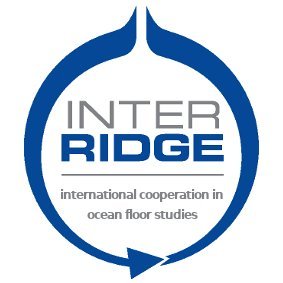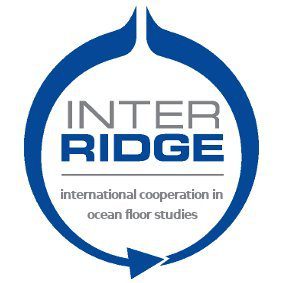InterRidge 2022 Webinar February
Unveiling Microbial Life in the Deep Rocky Biosphere (8:00 am GMT, Monday February 24th )
Summary
High-temperature rock-water interactions produce vast chemical energy for life at the mid-ocean ridge. The transition from high- to low- temperature hydrothermal ridge flank systems substantially reduces the production of chemical energy in the oceanic crust after 10 million years (Ma) after formation. In addition, the weakness of fluid circulation in the >10-Ma oceanic crust hinders fluid sampling from borehole-based observatories unlike young crust sites such as the Juan de Fuca Ridge (3.5 Ma) and North Pond (8 Ma). Oceanic crust sites (13.5, 33 and 104 Ma) were drilled into the basaltic basement in the South Pacific Gyre during IODP Expedition 329. Without sampling crustal fluids, it was technically challenging to characterize microbes in drilled basaltic cores. The first attempt was made for estimating the habitability of the rock interior by characterizing diagnostic products of low-temperature rock-water reactions such as smectite group minerals. We noticed Fe(III)-bearing smectite (nontronite) is not observed in 13.5-Ma core samples but in 33- and 104-Ma core samples (Yamashita et al. 2019). The second attempt was made to visualize microbial cells in association with Fe(III)-bearing smectite by developing a new method (detail provided during the webinar!!). As a result, it was surprisingly unveiled that microbial cells were densely enrobed within smectite aggregates (Suzuki et al. 2020). Dense microbial cells were also observed in association with Fe(II)-bearing smectite (saponite), indicating that the anaerobic rock interior is also habitable at the 104-Ma site. These results support the habitability of the upper oceanic crust from the ridge to subduction zones. Hopefully, a next big question about “how deep” will be investigated by future deep drilling to the mantle.
References:
Yamashita S, Mukai H, Tomioka N, Kagi H, Suzuki Y(2019) Iron-rich Smectite Formation in Subseafloor Basaltic Lava in Aged Oceanic Crust. Scientific Reports, 9, 11306.
Sueoka Y, Yamashita S, Kouduka M, Suzuki Y (2019) Deep microbial colonization in saponite-bearing fractures in aged basaltic crust: Implications for Subsurface Life on Mars. Frontiers in Microbiology. DOI: 10.3389/fmicb.2019.02793.
Suzuki Y, Yamashita S, Kouduka M, Ao Y, Mukai H, Mitsunobu S, Kagi H, D’Hondt S, Inagaki F, Morono Y, Hoshino H, Tomioka N, Ito M (2020) Deep microbial proliferation at the basalt interface in 33.5-104 million-year-old oceanic crust. Communications Biology, DOI: 10.1038/s42003-020-0860-1.
Main points
- The old oceanic crust (13.5 to 104 Ma) was investigated by ocean scientific drilling.
- Without collecting fluid samples, the habitability was estimated by the presence of smectite minerals in rock cores.
- The dense occurrence of microbial cells was spatially correlated with the smectite minerals.
- The habitability of the old oceanic crust could be global and extrapolated into the early biosphere on Earth and Mars.
Brief information about Dr. Yohey Suzuki: Main career and academic interest
Dr. Yohey Suzuki is an associate professor at Earth and Planetary Science Department, Graduate School of Science, The University of Tokyo. He obtained his Ph.D in Geomicrobiology from Geology and Geophysics Department, University of Wisconsin-Madison in 2002. He worked at JASMTEC as a research scientist to explore deep-sea hydrothermal fields by submersibles. After moving to Geological Survey of Japan in 2005, his research targets were extended to the deep crustal biosphere accessed by underground facilities and ocean scientific drilling. He has been developing methods for microbiology, molecular biology, petrology, and mineralogy for revealing microbial ecology in deep igneous rocks and microbe-mineral interactions. His interest is on the origin of life and extraterrestrial life approached from the photosynthesis-independent ecosystem on Earth.

